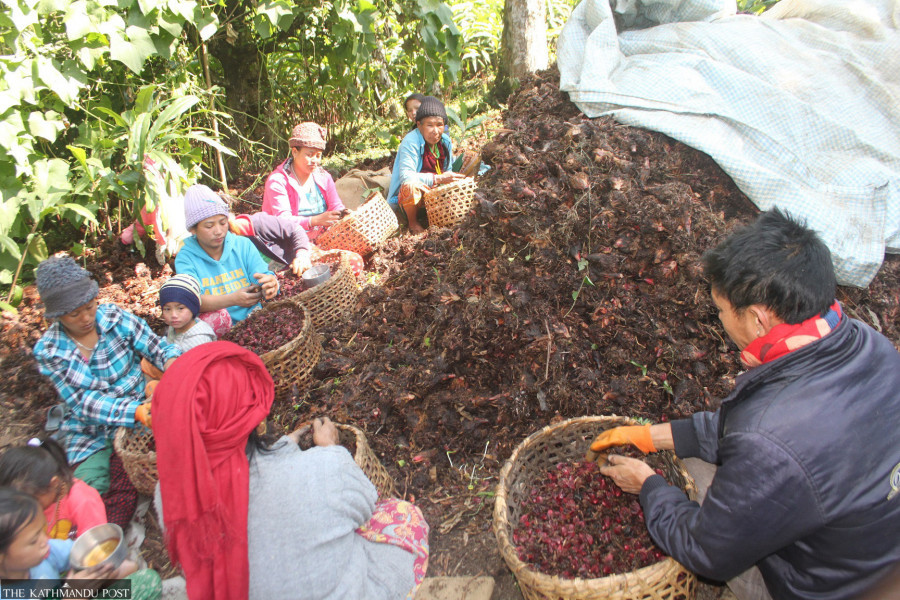Editorial
Spicing up the economy
Products like large cardamom could be Nepal’s way out of a ballooning trade deficit and economic mess.
With its misguided focus on earning through custom duties rather than by boosting its production, it’s hard to see Nepal’s economic engines revving up soon. In the first 10 months of the current fiscal, the country’s trade deficit narrowed by 15.85 percent, compared to the same period in the previous fiscal. What is interesting is that even as imports declined by 16.78 percent, exports plunged by 24.49 percent. The country could be producing and exporting so much more. Take large cardamom. Nepal is the world’s biggest producer of this high-value spice. In the first nine months of the current fiscal, it exported a record Rs6.36 billion worth of the product. More than 90 percent of the large cardamom was exported to India, where a kilogram of it fetches between Rs700-Rs1,000. Indian importers process the Nepali product and resell them in third-countries at significant mark-ups. If Nepali producers could directly sell to end customers, say in the Middle East, large cardamon’s biggest market, the country could earn a lot more from the same quantity it now sells to India.
But to do so Nepal needs to incentivise the cultivators, help them set up local processing facilities, invest in R&D to discover ways to increase yields, and better market the product abroad. What is true in the case of large cardamom also applies to other goods identified by the Nepal Trade Integration Strategy (NTIS) 2016 as having high export potential. These include, besides cardamom, tea, ginger, yarns, carpet, pashmina, medicinal herbs, textiles, footwear and leather items. While the primary market for NTIS-listed farm products is India, Europe and the US are the biggest buyers of handicraft goods under the same list. The products identified in the strategy, normally reviewed every five years, get special export privileges. Or that is the idea. But mainly due to poor coordination between different government bodies, the strategy has largely failed, and it is in the process of another revision. Yet even the best of strategies will fall short without a change in the country’s focus. If Nepal is to industrialise and create jobs at home—thereby keeping the national economy afloat—it must reduce its over-reliance on earnings through import taxes and look to create a better production and industrial climate.
It could also better utilise existing resources. For instance, why are our embassies in Qatar, Saudi Arabia and the UAE doing so little to promote Nepal’s cardamom in these countries with high import potential for the product? Why at all have the missions in Bahrain and Oman if they cannot put in even a little effort to help Nepal tide over a grave economic crisis? The best of trade strategies will tank if there is no willingness to implement them. The export saga of large cardamom also suggests that we invest more in the modernisation of agriculture—the primary source of livelihood for most Nepalis—and to create a better support system for farmers, the road to its prosperity and development will continue to be hindered.




 11.12°C Kathmandu
11.12°C Kathmandu














